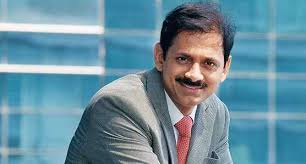BANKS
Why Vaidyanathan is bullish on IDFC First Bank’s rural loan book
IDFC First Bank’s rural loan book of Rs 40,000 crore offers three benefits; CEO Vaidyanathan also believes that the bank is strategically well positioned for the future.
IDFC First Bank’s rural loan book of Rs 40,000 crore offers three benefits; CEO Vaidyanathan also believes that the bank is strategically well positioned for the future.

IDFC First Bank has built a rural loan book of substantial size which fetches good margins, is of high asset quality and takes care of priority sector lending.
The private lender’s rural financing book is worth Rs 40,000 crore. The bank’s loan book has grown by Rs 90,600 crore in the last five years, out of which Rs 34,200 crore has come from rural financing alone.
“Rural accounts for 38% of our incremental loan book built in the last five years,” IDF First Bank managing director and CEO Vaidyanathan told analysts.
IDFC First Bank’s rural loan product suite is large and diversified. The bank has just started selling gold loans, adding to the lending portfolio ranging from commercial vehicles, tractors, two-wheelers, micro enterprises and Kisan Credit Card India (KCC).
In starting a diversified portfolio in rural India, the bank has reaped three benefits. First, it gives the lender a net interest margin which is good. “You can just do enough business and keep going forever and it’s not getting saturated at all. So, that’s one big benefit. We get margins,” said Vaidyanathan.
The asset quality in the rural loan book is healthy, with the gross non-performing assets (NPAs) under 1.5% and the net NPA not even 0.5%.
“Our rural credit performance has been fantastic. Somehow, the rural people are much more conscious, more sensible, and are not exactly supported by lawyers. They just pay back the dues,” said Vaidyanathan.
The third benefit is that IDFC First Bank has been able to address the issue of priority sector lending (PSL). In earlier times, the private lender could not meet the PSL target and used to lock money in the Rural Infrastructure Development Fund (RIDF) at very low interest rates. In March 2019, the bank was short on PSL by a big margin and had a loan book of about Rs 1.04 lakh crore (about Rs 75,000 crore of IDFC book and about Rs 25,000 crore of Capital First book). Due to the shortfall in mandatory PSL requirement, the lender locked Rs 3,500 crore in RIDF at the ridiculously low interest rate of 3.5% for 7-8 years.
“Because we built a rural business so strongly, we are now able to meet our PSL requirements and also sell our surplus portfolio in the market. We are now making a bit of a profit by selling PSL certificates. Our RIDF bonds outstanding has also come down from Rs 3,500 crore to Rs 926 crore,” Vaidyanathan said.
IDFC First Bank’s rural loan book is growing healthily and enabling the lender to play in a market which is underserved and massively underpenetrated.
Vaidyanathan also believes that the bank he leads is strategically well positioned for the future in an economy that is estimated to reach $7 trillion by 2030. Assuming that 60% of the Indian economy will be consumption, the size of that will be around $4 trillion. The credit size is expected to climb from under $2 trillion to around $6 trillion.
“So, a good part of India is yet to be built. Though we may be an early stage bank, the big story for India’s growth is yet to happen and the big story for our bank is also yet to happen,” said Vaidyanathan.
The $4 trillion which is going to be added to the credit book in India over the next 10 years will come significantly from retail, micro, small and medium enterprises, agriculture and rural India, said Vaidyanathan, adding that “this opens up a big opportunity for us”.
The core strategy of the bank right from the beginning has been to sort out liabilities as well as deposits. “On the asset side, we have a good machine which is tested now for 14 years. We get a good NIM, we get good margins, we make a return on equity of over 20% in that. So, really, the asset side is not a problem,” Vaidyanathan said.
On the deposit side, the bank has a kitty of Rs 2 lakh crore. Out of this, customer deposit is Rs 1.93 lakh crore. This is not even 1% of the Indian banking system deposit, which is at Rs 212 lakh crore. The management has guided the customer deposit to reach Rs 6 lakh crore in five years.
“Now because we are 1% of the market doesn’t mean we are going to grow. The reason why we are confident that we will grow is because we have built a high-quality brand and the brand attracts deposits. We feel that the Rs 6 lakh crore target is achievable without us needing to go crazy on interest rates,” said Vaidyanathan.
